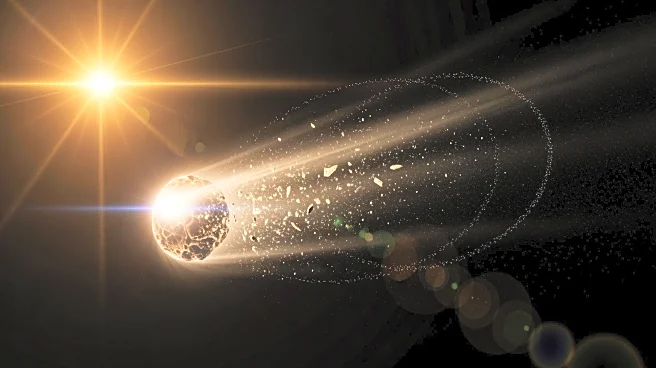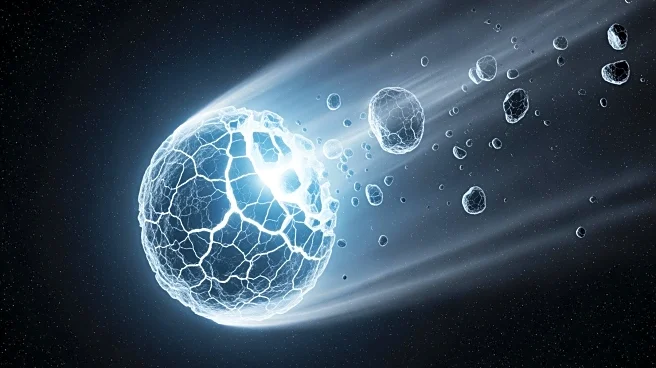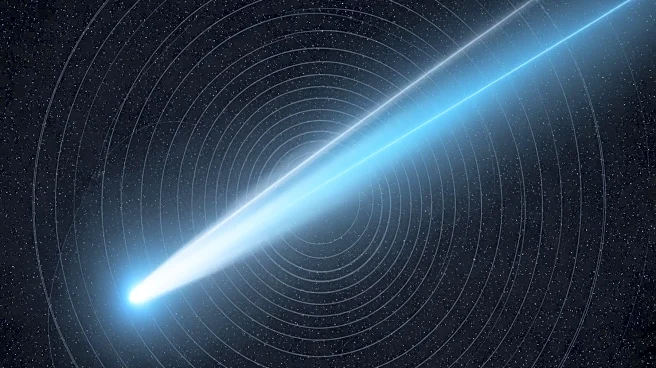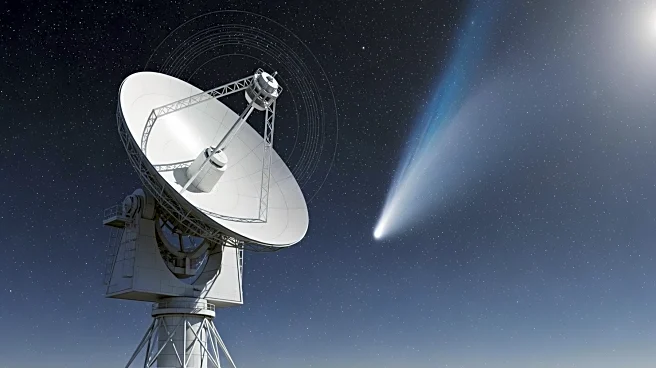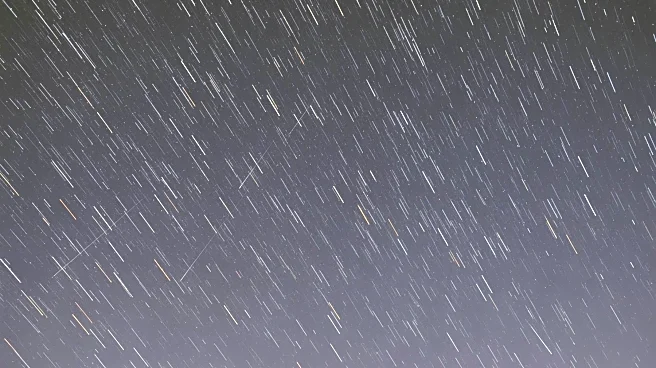What's Happening?
Comet C/2025 K1 (ATLAS) has fragmented into several pieces following its recent close approach to the sun. Discovered in May 2025, the comet passed perihelion on October 8, coming within 31 million miles
of the sun. Initial observations suggested the comet survived its solar passage, but new images reveal it has broken into multiple fragments due to gravitational strain. The disintegration was preceded by a brightening event, transforming the comet's appearance from green to gold. The comet's breakup provides a unique opportunity for astronomers to study the composition and behavior of cometary materials under extreme conditions.
Why It's Important?
The disintegration of Comet C/2025 K1 (ATLAS) offers scientists a chance to study pristine material from the solar system's formation, potentially revealing insights into the early solar system's composition and dynamics. Understanding the processes that lead to cometary fragmentation can improve models of comet behavior and inform predictions about other celestial bodies. The comet's breakup also highlights the challenges of predicting cometary stability and survival during close solar encounters, emphasizing the need for continued observation and research.
What's Next?
Astronomers will continue to monitor the fragments of Comet C/2025 K1 (ATLAS) as they approach Earth, providing further opportunities to study the comet's composition and behavior. The fragments are expected to pass closest to Earth on November 25, offering a chance for detailed observation using telescopes and other instruments. These observations may contribute to a better understanding of cometary dynamics and the conditions that lead to fragmentation.
